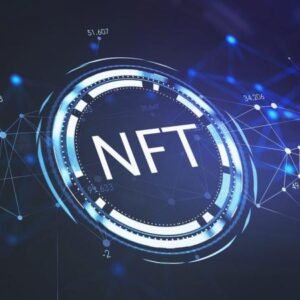In 2025, the world of decentralized finance (DeFi) is more dynamic, sophisticated, and rewarding than ever before. If you’ve been following the crypto space, you’ve likely heard the term “yield farming” tossed around frequently. But what does it actually mean in the context of today’s market? More importantly, how can you tap into it to generate consistent, passive crypto income?
This guide is not just another explainer — it’s your ultimate DeFi yield farming blueprint for 2025. We’ll walk you through strategies that work, highlight platforms that pay, compare top protocols, and decode the economics of farming like a pro.
What is Yield Farming in DeFi?
Yield farming, also known as liquidity mining, is the process of staking or lending crypto assets in DeFi protocols to earn rewards in the form of additional cryptocurrency. These rewards often come from trading fees, interest, or incentive tokens provided by the protocol.
Yield farming relies on smart contracts — self-executing code on blockchain — to automate lending, borrowing, and reward distribution. Platforms like Aave, Curve, and Uniswap have become pillars of the DeFi landscape by allowing users to pool assets and earn.
In 2025, the game has evolved significantly with new chains, optimized strategies, and advanced tools that offer higher yield with better risk management.
Why DeFi Yield Farming is Booming in 2025
The resurgence of crypto markets and mainstream adoption of DeFi tools have created a fertile environment for yield farming. Here’s why yield farming is more lucrative and safer in 2025:
- Enhanced cross-chain operability thanks to protocols like LayerZero
- Smart contract audits and insurance options are now industry standard
- Institutional-grade DeFi products are enabling better capital efficiency
- Tokenomics upgrades are reducing inflationary pressures from reward tokens
These improvements mean that while the principles of yield farming remain the same, the mechanisms, platforms, and expected returns have all matured.
Top DeFi Yield Farming Platforms in 2025
Let’s compare some of the leading platforms that dominate the yield farming space in 2025:
| Platform | Chain | Yield Potential | Risk Level | Notable Features |
|---|---|---|---|---|
| Yearn Finance | Ethereum | Medium-High | Medium | Auto-compounding vaults |
| Beefy Finance | Multi-chain | Medium | Low-Medium | Aggregated yield strategies |
| Pendle | Ethereum/Arbitrum | High | High | Yield tokenization and forward farming |
| Convex | Ethereum | Medium | Medium | Maximize Curve yields |
| GMX | Arbitrum | High | Medium | Revenue-sharing from perpetual trading |
These platforms have consistently offered reliable yield while evolving with the market. Yearn Finance and Beefy automate strategies, while others like Pendle allow traders to speculate on future yield.
Best Yield Farming Strategies in 2025
There’s no one-size-fits-all approach to yield farming. Strategies differ based on your risk tolerance, capital, and desired returns.
1. Stablecoin Farming
If you prefer steady and less volatile returns, farming with stablecoins like USDC, USDT, or DAI remains a go-to. Platforms like Curve Finance offer low slippage and relatively high APYs through stable pools.
Pros:
- Lower risk due to price stability
- Often covered by insurance protocols
Cons:
- Lower returns compared to volatile asset pools
2. Dual-Asset Liquidity Pools
Provide liquidity to token pairs (e.g., ETH/USDC or BTC/ETH) on platforms like Uniswap V3 or Balancer. You earn trading fees plus rewards from incentive programs.
Pro Tip: Use platforms with concentrated liquidity or automated rebalancing to reduce impermanent loss.
3. Single-Asset Staking with Auto-Compounding
Staking a single token in auto-compounding vaults is a beginner-friendly approach. Protocols like AutoFarm and Beefy Finance are perfect for this.
Benefits:
- Reduced risk of impermanent loss
- Set-and-forget strategy
4. Yield Tokenization
Innovative platforms like Pendle let users tokenize and trade future yield. You can lock in returns or speculate on interest rate movements.
This strategy is ideal if you want to:
- Hedge interest rate exposure
- Maximize future passive income streams
How to Mitigate Risk in Yield Farming
Yield farming comes with inherent risks, but savvy farmers know how to minimize them:
- Impermanent Loss: Avoid volatile pairs or use concentrated liquidity.
- Smart Contract Risk: Stick to audited platforms and consider insurance like InsurAce.
- Rug Pulls & Exit Scams: Vet teams, tokenomics, and community engagement.
- Volatility: Use stablecoin strategies or farm blue-chip tokens like ETH, wBTC, or SOL.
Don’t chase high APYs blindly. Focus on real yield, i.e., income generated from fees rather than inflationary token emissions.
Real Yield vs. Ponzi Yield: Understanding the Difference
The term “real yield” has gained traction to distinguish between sustainable and unsustainable farming returns.
- Real Yield comes from platform fees, like GMX sharing trading revenue with stakers.
- Ponzi Yield relies on constant new user deposits to maintain APY, which collapses when inflows slow.
Always ask: Where does the yield come from? If it’s not from fees or lending interest, it might not be sustainable.
Key Tools for Yield Farmers in 2025
Modern yield farming requires more than just wallet access. These tools help optimize, monitor, and protect your positions:
- Zapper – Portfolio tracker & farming dashboard
- DeFiLlama – Real-time yield comparisons across chains
- Revert Finance – Analyze LP returns and impermanent loss
- EigenLayer – Restaking protocols for added rewards
- Token Terminal – Evaluate project revenue and token metrics
Using these tools gives you a significant edge in managing risk and finding optimal farms.
Emerging Chains and Ecosystems Worth Watching
Ethereum remains dominant, but new chains offer better scalability and cost efficiency:
- Arbitrum & Optimism: Ethereum Layer 2s with explosive DeFi growth
- Solana: High-throughput chain with fast-growing DEXs like Jupiter
- Base: Coinbase-backed L2 with growing institutional trust
- Sui & Aptos: Move-based chains focused on performance and developer UX
Exploring these ecosystems early often leads to higher yields and potential airdrops.
Top Trends Shaping Yield Farming in 2025
Here’s what’s reshaping the yield farming landscape this year:
- Restaking Protocols: Projects like EigenLayer allow ETH stakers to earn extra yield by securing other networks.
- AI & Automated Farming Bots: Tools like Harvest now use AI to rebalance yields.
- Modular Yield Products: Tokenized vaults and structured DeFi products are bringing TradFi mechanics to DeFi.
- DePIN Yield (Decentralized Physical Infrastructure): Platforms like IoTeX offer yield for securing real-world devices.
- Regulatory Clarity: Especially in the U.S., where the SEC is slowly warming to compliant DeFi models.
Final Thoughts: Maximizing DeFi Passive Income in 2025
The rules of the game have changed, but the opportunities have grown exponentially. Whether you’re a seasoned DeFi farmer or a curious newcomer, the blueprint to success lies in:
- Diversifying your strategies
- Choosing protocols with real, sustainable yield
- Staying informed and using the right tools
Yield farming in 2025 is no longer a high-risk, high-reward gamble — it’s becoming a structured path to building long-term, passive income from crypto assets. Approach it with caution, consistency, and curiosity, and you’ll find your edge in this rapidly evolving financial frontier.
Looking for the best APYs today? Start comparing live DeFi yields and join the conversation in leading communities like r/DeFi or Crypto Twitter.
The yield is out there — now you have the blueprint to find it.






